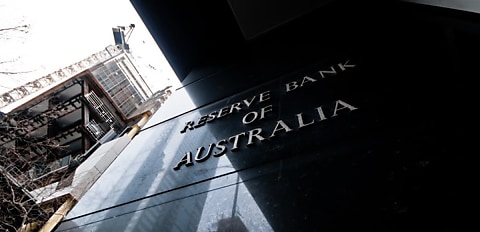Data released by the Australian Bureau of Statistics (ABS) – Labour Force and Wage Price Index (WPI) – were broadly in line with the Reserve Bank of Australia’s (RBA) expectations and will most likely not impede in a further 0.25-bp rate cut during the May monetary policy meeting.
According to the ABS, the seasonally adjusted unemployment rate remained at 4.1 per cent in April (unchanged for the last few months), while the WPI rose by 0.9 per cent in March 2025 and 3.4 per cent annually.
Sean Crick, ABS head of labour statistics, said: “With employment increasing by 89,000 people and the number of unemployed increasing by 6,000 people, the unemployment rate remained steady at 4.1 per cent for April.”
The latest Labour Force figures revealed that the rise in employment was larger for the female population, increasing by 0.9 per cent, or 65,000, with the majority being full-time workers, rising by 1.1 per cent or 42,000. Comparatively, female part-time workers rose by 0.8 per cent or 23,000.
Meanwhile, male employment rose by 0.3 per cent (24,000).
Annually, employment grew by 390,000 people (2.7 per cent), with the annual growth rate being higher than the population growth rate for people aged 15 years and over (2.1 per cent over the same period).
On the WPI data, Michelle Marquardt, ABS head of prices statistics, said annual wage growth increased for the “first time since the June quarter 2024”.
“The 3.4 per cent increase in wages for the year to the March quarter 2025 was higher than the 3.2 per cent to the December quarter 2024, but lower than the 4.0 per cent at the same time last year,” Marquardt said.
The seasonally adjusted private sector annual wage growth remained unchanged from the previous quarter (December 2024), at 3.3 per cent, while annual public sector wage growth was higher than the private sector at 3.6 per cent during the March quarter, an increase from 2.9 per cent from the previous quarter.
Callam Pickering, APAC economist at global job site Indeed, said this data will “take a backseat to uncertainty” when the Reserve Bank meets early next week.
“Geopolitical and economic uncertainty has created an environment where the RBA will need to cut rates steadily over the next few months,” Pickering said.
“The global economic outlook is suddenly much weaker, the US administration is unpredictable and unreliable, and while the direct impact of tariffs on Australia may be low, the indirect impact from weaker growth among our major trading partners may be quite large.
“The RBA will look to support the economy via looser monetary policy and they should cut rates next week and then again when they meet in early July.”
Krishna Bhimavarapu, APAC economist at State Street Global Advisors, said the incoming GDP data “will reclarify the necessity for lower rates”.
“We still expect the RBA to cut the cash rate by 25 bps next week to 3.85 per cent and maintain the view that the cash rate may end 2025 at 3.1 per cent,” Bhimavarapu said.
Commenting on the wages data, Westpac senior economist Justin Smirk said while the March quarter data was “an upside surprise” (above the market’s expectation of 0.8 per cent), the major bank’s economics team does not believe it’s “enough to prevent a May rate cut as it was still consistent with the moderation in wages we have been expecting.”
“March was an upside surprise but it is not enough to stop a May rate cut as it is still consistent with the ongoing moderation in wage inflation,” he said.
Commonwealth Bank of Australia (CBA) senior economist Stephen Wu said they do not view the wages data as “indicative of a re-tightening in the labour market”.
“There is an ongoing ‘catch-up’ of wages, though the risk is this dynamic is stronger than expected, and/or it spills over to the broader labour market, especially given that the level of unemployment remains low,” Wu said.
“The data was in line with the RBA’s forecasts, so [it] continues to suggest that [the May] cash rate decision will very likely be a 25 bps cut. But the decision will be between on-hold and a 25 bps cut, rather than considerations of a 50 bps cut.”
ANZ economists Aaron Luk and Adelaide Timbrell said although employment came through “much stronger than expected”, the increase is expected to be “more noise than signal, with more volatility than usual in employment growth through 2025 so far”.
“Hours worked – a more stable indicator of economic activity – was flat despite strong growth in employment,” they said.
“We expect the RBA to look through the strong monthly increase in employment, as it did for the surprising drop in February employment. In the April board minutes it cited volatility as the cause for that drop.”
[RELATED: New lending to investors drops after strong 2024]

